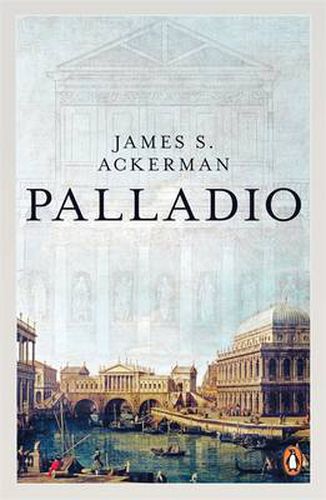Readings Newsletter
Become a Readings Member to make your shopping experience even easier.
Sign in or sign up for free!
You’re not far away from qualifying for FREE standard shipping within Australia
You’ve qualified for FREE standard shipping within Australia
The cart is loading…






Palladian structure influenced architects of the 20th Century, including Le Corbusier, Philip Johnson and IM Pei.
Palladio (1508-80) combined classical restraint with constant inventiveness. In this study, Professor Ackerman sets Palladio in the context of his age - the Humanist era of Michelangelo and Raphael, Titian and Veronese - and examines each of the villas, churches and palaces in turn and tries to penetrate to the heart of the Palladian miracle. Palladio’s theoretical writings are important and illuminating, he suggests, yet they never do justice to the intense intuitive skills of a magician of light and colour . Indeed, as the photographs in this book reveal, Palladio was as sensual, as skilled in visual alchemy as any Venetian painter of his time , and his countless imitators have usually captured the details, but not the essence of his style. There are buildings all the way from Philadelphia to Leningrad which bear witness to Palladio’s permanent place in the making of architecture , yet he also deserves to be seen on his own terms.
$9.00 standard shipping within Australia
FREE standard shipping within Australia for orders over $100.00
Express & International shipping calculated at checkout
Stock availability can be subject to change without notice. We recommend calling the shop or contacting our online team to check availability of low stock items. Please see our Shopping Online page for more details.
Palladian structure influenced architects of the 20th Century, including Le Corbusier, Philip Johnson and IM Pei.
Palladio (1508-80) combined classical restraint with constant inventiveness. In this study, Professor Ackerman sets Palladio in the context of his age - the Humanist era of Michelangelo and Raphael, Titian and Veronese - and examines each of the villas, churches and palaces in turn and tries to penetrate to the heart of the Palladian miracle. Palladio’s theoretical writings are important and illuminating, he suggests, yet they never do justice to the intense intuitive skills of a magician of light and colour . Indeed, as the photographs in this book reveal, Palladio was as sensual, as skilled in visual alchemy as any Venetian painter of his time , and his countless imitators have usually captured the details, but not the essence of his style. There are buildings all the way from Philadelphia to Leningrad which bear witness to Palladio’s permanent place in the making of architecture , yet he also deserves to be seen on his own terms.